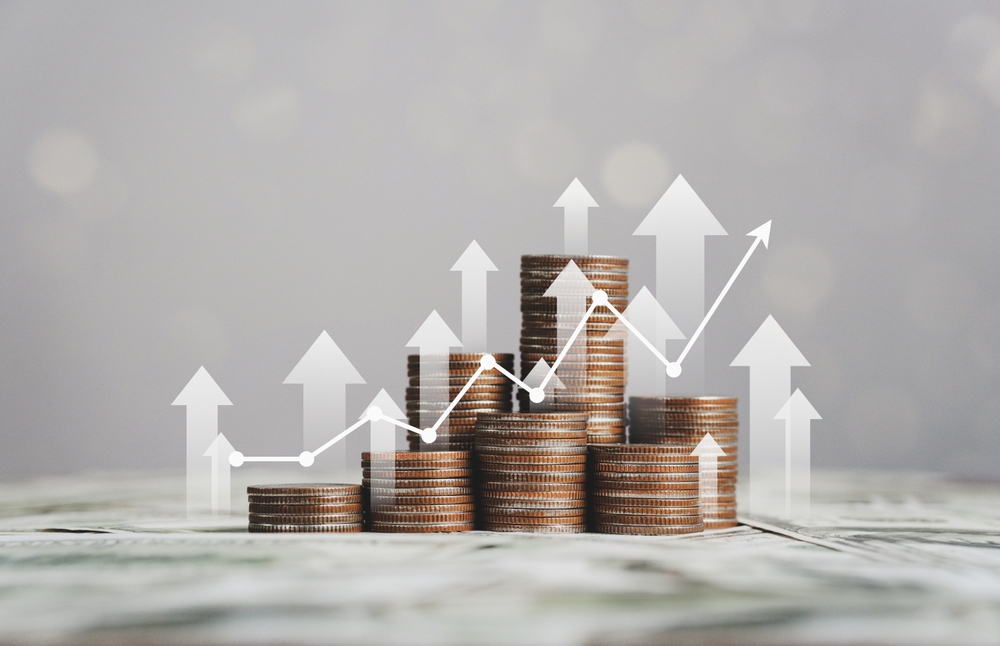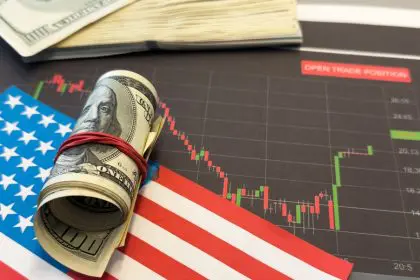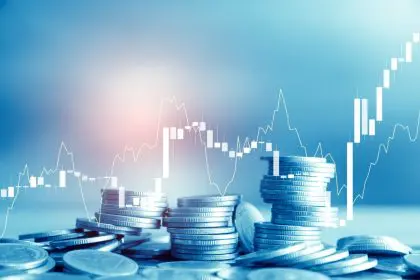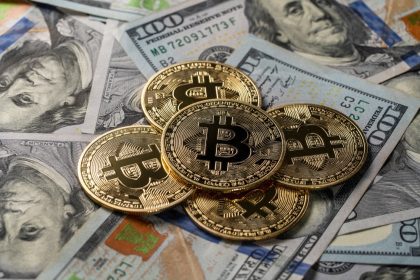That gut-wrenching feeling at the checkout counter might finally be easing up. After months of watching prices climb on everything from groceries to gas, Americans just got some refreshingly good news. The latest inflation numbers show prices rising at their slowest pace in over three years, potentially signaling the beginning of the end for our national pricing nightmare.
The numbers game
April’s inflation report delivered a pleasant surprise to economists and everyday shoppers alike. Consumer prices rose just 2.3 percent compared to last year—the smallest annual increase since those blissful pre-pandemic days of early 2021 when “inflation” wasn’t yet part of everyone’s daily vocabulary.
Even more encouraging, the month-to-month increase cooled to just 0.3 percent from March to April. While prices are still climbing, they’re doing so at a significantly gentler pace that has financial experts cautiously optimistic that the worst inflation storm in decades might finally be breaking.
The numbers came in lower than most economists had predicted, suggesting that the Federal Reserve’s aggressive campaign of interest rate hikes might finally be paying off. After watching prices spiral upward for nearly two years, Americans can take comfort in signs that economic gravity is starting to reassert itself.
The shopping cart reality
So what does this actually mean when you’re standing in the grocery aisle trying to decide between name-brand cereal and the store brand? While prices aren’t dropping back to 2019 levels, the rate of increase is slowing substantially.
Think of it this way—instead of prices jumping 10 cents every month, they might now be creeping up by just 3 cents. Your grocery bill is still higher than last year, but the shock factor is diminishing. Those mental calculations we’ve all been doing—”Wasn’t this $3.99 last month?”—should become less painful as price tags stabilize.
Categories that were previously inflation hotspots are showing marked improvement. Used car prices, which skyrocketed during the pandemic supply chain crisis, have actually started declining. Household furnishings, which became premium-priced commodities during the work-from-home boom, are also seeing price moderation as supply chains normalize.
The stubborn holdouts
Not everything is cooling at the same rate, though. Housing costs, particularly rent, continue to be a thorn in consumers’ sides. Shelter costs remain “sticky”—economist-speak for prices that don’t respond quickly to changing economic conditions.
If you’re a renter, you’re likely still feeling the squeeze despite the broader inflation cooldown. Property owners typically adjust rental rates more slowly than other businesses adjust product prices, meaning housing inflation tends to linger even as other categories improve.
Services inflation also remains elevated compared to goods. From haircuts to auto repairs, services requiring human labor haven’t seen the same price moderation as physical products. This reflects the tight labor market where workers can still command higher wages, costs that eventually get passed to consumers.
The Fed factor
Wall Street has been obsessively watching these inflation numbers, knowing they hold the key to what happens next with interest rates. The Federal Reserve has been aggressively hiking rates to tame inflation, but this approach comes with its own economic pain—more expensive mortgages, pricier car loans, and higher credit card interest.
April’s cooler-than-expected numbers immediately sparked speculation that the Fed might finally step back from its rate-hiking campaign. Stock markets responded positively to the news, with investors betting that financial conditions might ease without triggering another inflation surge.
However, Fed officials are likely to remain cautious, waiting for more than just one month of encouraging data before declaring victory. The central bank’s target inflation rate is 2 percent—and while 2.3 percent is remarkably close, policymakers will want confirmation that this isn’t just a temporary dip before changing course.
The psychological shift
Beyond the raw numbers, inflation has a powerful psychological component. When consumers expect prices to keep rising rapidly, they tend to spend more immediately—”buying before it gets more expensive”—which ironically fuels further inflation.
The April report could help break this cycle of inflation expectations. As Americans begin to believe that price increases are moderating, they may return to more normal spending patterns, removing some of the urgency that has characterized consumer behavior during the inflation surge.
This psychological reset might be as important as the actual price moderation itself. Economic confidence impacts everything from business investment to housing decisions, and a collective sigh of relief about inflation could ripple positively throughout the economy.
The grocery aisle outlook
Food prices, perhaps the most visible and personally felt category of inflation, show encouraging signs of moderation. While your grocery bill remains higher than pre-pandemic days, the rate of increase has substantially slowed.
The days of double-digit percentage increases in dairy, meat, and produce appear to be behind us. Food inflation has steadily cooled from its peak, with prices now rising at a much more modest pace. Categories like eggs, which saw staggering price spikes, have experienced significant corrections.
This doesn’t mean your favorite breakfast cereal will suddenly cost what it did in 2019, but the jarring monthly increases that had families constantly adjusting their food budgets may finally be subsiding. Grocery shopping might actually become more predictable again.
The pump price picture
Energy costs, another inflation category that hits consumers directly in their daily lives, actually declined slightly in April—a welcome change after wild fluctuations over the past two years.
Gas prices, which function as both a real expense and a highly visible inflation signal for most Americans, have stabilized compared to their dramatic pandemic-era swings. While seasonal patterns will continue to affect prices at the pump, the extreme volatility appears to be easing.
Home utility costs also show signs of moderation after dramatic spikes that left many households struggling with electric and heating bills. While regional variations persist, the national trend points toward more manageable energy inflation.
The housing headache
Despite the broadly encouraging inflation news, housing costs remain a significant concern. Shelter represents about a third of the average household budget and continues to be a major contributor to overall inflation.
For renters, relief will likely come more slowly than in other sectors. Rental markets operate on longer contract cycles, meaning that even as broader economic conditions improve, lease renewals may still come with unwelcome increases.
Prospective homebuyers face a complex landscape. While home price appreciation has cooled dramatically from pandemic highs, mortgage rates remain elevated due to the Fed’s anti-inflation campaign. This creates a challenging affordability equation that will take time to balance out.
The travel trajectory
If you’re planning a vacation, April’s inflation report offers mixed signals. Airfare prices have become notably volatile post-pandemic, with dramatic swings between bargain rates and premium pricing depending on demand patterns and fuel costs.
Hotel prices have stabilized somewhat but remain elevated compared to pre-pandemic norms. The good news is that the extreme price surges that characterized post-reopening travel appear to be moderating, potentially making your summer getaway somewhat less financially painful than last year.
Rental car prices, which reached almost comical heights during the pandemic when companies sold off their fleets only to face surging demand as travel resumed, have significantly retreated from their peaks. This particular inflation horror story appears to be largely behind us.
The road ahead
While April’s report represents welcome news, inflation’s decline will likely follow a bumpy path rather than a smooth downward trajectory. Economic data tends to zigzag even when the overall trend is clear, meaning we shouldn’t be surprised by occasional months where inflation ticks back up slightly.
The key question for consumers and policymakers alike is whether we’re witnessing a fundamental shift toward price stability or merely a temporary reprieve. Most economists lean toward the former interpretation, believing that the combination of improved supply chains, cooling demand, and the impact of higher interest rates has finally broken inflation’s momentum.
For everyday Americans, the psychological relief may be as important as the economic reality. After months of feeling like every shopping trip brought a new price shock, the prospect of greater predictability and stability represents a meaningful improvement in quality of life—even if prices don’t return to pre-pandemic levels.
As we move through 2024, this inflation moderation could create ripple effects throughout the economy. If the Federal Reserve gains confidence that inflation is truly contained, interest rates could stabilize or even decline, potentially breathing new life into housing markets and business investment.
While it’s too early to declare complete victory over inflation, April’s report suggests we’re moving in the right direction. For a nation weary of price shocks and financial strain, that’s genuinely good news worth celebrating—cautiously.
















